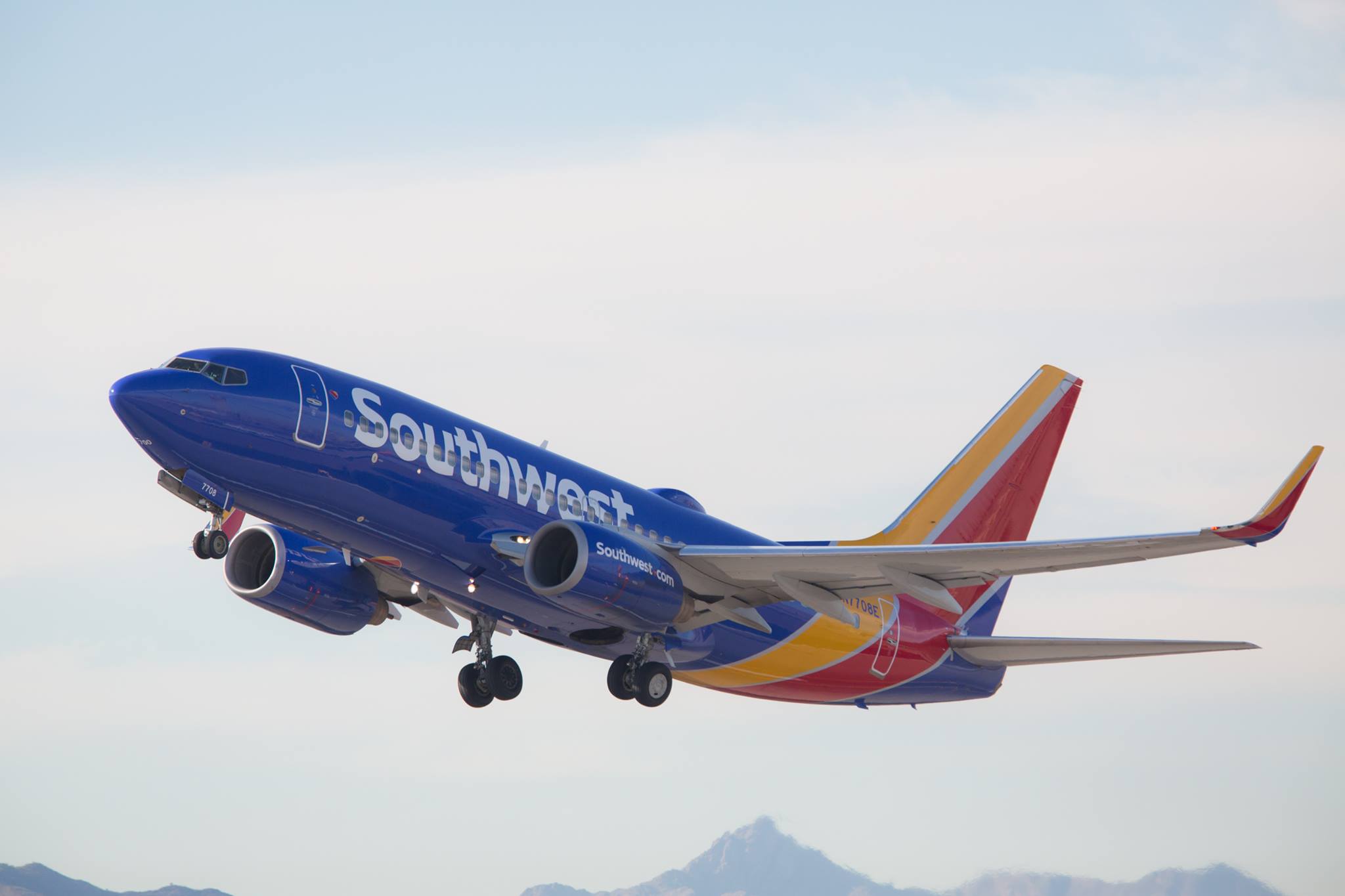Few airlines in the world have been spared from the wreckage of the COVID-19 pandemic. Even U.S. low-fare heavyweight Southwest Airlines (LUV +0.47%) -- which has reported 47 consecutive annual profits -- rang up a sizable loss last quarter.
Yet while Southwest's profitability streak is virtually certain to end this year, its financial position remains extremely strong. As a result, Southwest Airlines has been able to chart a unique course through the pandemic, which could pay off handsomely in the long run.
A big quarterly loss
Southwest slashed its capacity by 55.3% year over year last quarter, but that wasn't nearly enough to offset a steep drop in air travel. Demand was virtually nonexistent in April, when Southwest's load factor (the percentage of seats filled with paying customers) was less than 8%. May and June were somewhat better, but still exceptionally weak by normal standards. As a result, the company generated just $1 billion of revenue in the second quarter -- down 83% year over year.
Operating expenses -- excluding special items -- decreased by 41%. This wasn't as big a reduction as many of Southwest's rivals managed.
With its revenue decline far outpacing its cost cuts, Southwest Airlines posted an operating loss of nearly $2.2 billion. Its adjusted net loss came to $1.5 billion, or $2.67 per share. On a GAAP basis, Southwest's net loss was a more moderate $915 million, thanks to the payroll support grants it received under the CARES Act. For comparison, the company's net income for all of 2019 totaled $2.3 billion.

Image source: Southwest Airlines.
Southwest is playing the long game
Whereas Southwest Airlines has usually been one of the most profitable companies in the U.S. airline industry, its first-quarter loss was quite large compared to what other airlines reported (adjusted for size). To some extent, this may reflect IT limitations that impacted Southwest's ability to rapidly cut capacity.
That said, the company isn't really trying to minimize its losses right now. With an industry-leading balance sheet -- Southwest has more cash than debt -- management can afford to make strategic decisions that might increase short-term losses but deepen Southwest's long-term competitive advantage. Airlines with weaker balance sheets don't have that luxury.
For example, running more aggressive schedules than rivals during the pandemic may allow the company to win the long-term loyalty of new customers. Perhaps even more importantly, Southwest is one of a handful of carriers pledging to keep all middle seats open on its flights this summer. These moves seem to be paying off, as Southwest Airlines achieved a record high net promoter score (a measure of customer satisfaction) last quarter.
The strategy continues
Southwest Airlines just announced its boldest move yet to stand out from the crowd. Virtually every U.S. airline has already sent out WARN notices to inform employees of potential layoffs on Oct. 1, when CARES Act restrictions end. By contrast, Southwest recently told its employees that it won't lay off or furlough any staff until at least the end of 2020.
To pull this off, Southwest Airlines offered employees a variety of options to retire early or take extended leaves of up to 18 months at 50% or more of their base pay. About 27% of the company's workforce took one of those options. Together, these programs will cost an estimated $1.7 billion. However, the benefit in terms of keeping employees happy and engaged could be priceless. (The early retirements will also drive long-term cost savings for Southwest.)
Management did warn that even with a temporarily smaller workforce, demand would have to double from recent levels just for the airline to reach breakeven. The company burned an average of $23 million of cash each day last quarter -- a little more than $2 billion in total -- and expects a similar level of cash burn in Q3. With nearly $14.5 billion of cash and investments as of June 30, Southwest can sustain that level of cash burn for a while, but not indefinitely. If demand doesn't improve by year-end, furloughs may become inevitable.
By going above and beyond the call of duty -- holding middle seats open and avoiding furloughs at least through the end of 2020 -- Southwest Airlines will burnish its stellar reputation with customers and employees. That could enable long-term market-share gains, allowing Southwest to resume a pattern of steady growth once the COVID-19 pandemic ends.






